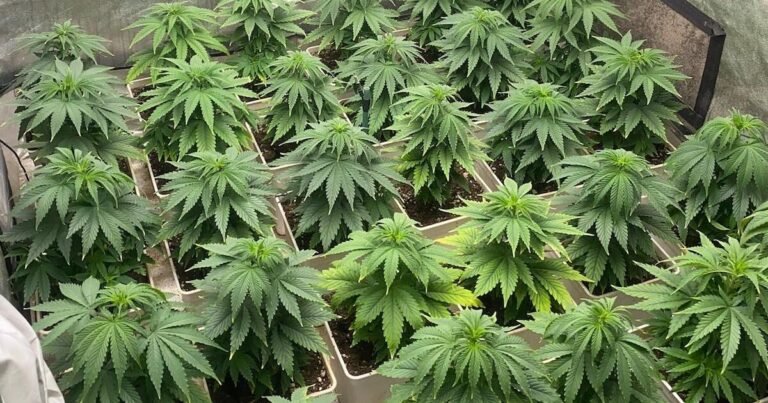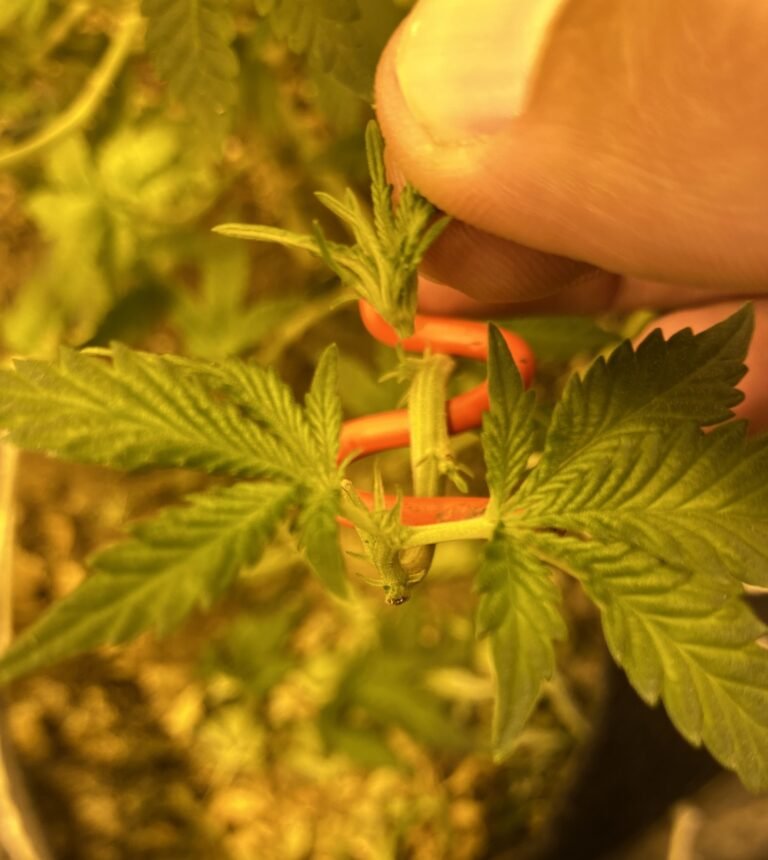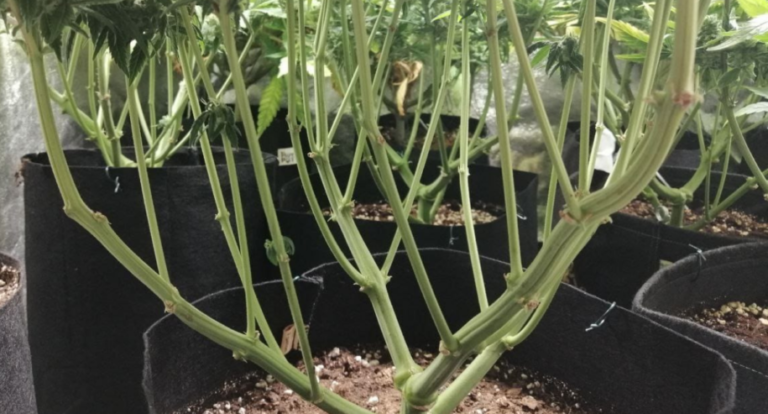By training cannabis plants, you can achieve very good yields from one or more plants. The ScrOG technique improves growing in every way: you’ll be able to make better use of space and achieve higher yields.
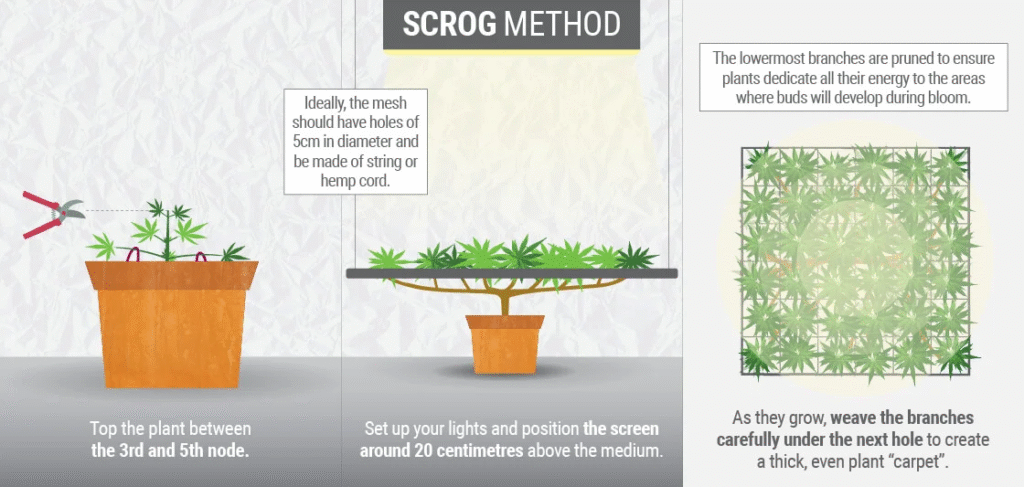
Advantages of growing marijuana in a ScrOG
- Light Exposure: With a ScrOG, you get a more uniform crop, where light exposure is maximized. When not trained, cannabis plants produce a main cola that rises above the rest of the plant, meaning grow lights should be placed above this point. In contrast, in a ScrOG grow, the lights will be at an appropriate distance from all flowers.
- Productivity: Since all buds receive adequate light, they maximize their photosynthetic potential, leading to increased bud size and resin production.
- Aeration: With horizontal mesh, there is adequate ventilation above and below the mesh. Adding a fan will further enhance this advantage, reducing the risk of fungal growth.
- Maximizing Space: Larger yields are achieved with a single ScrOG plant in a small space than with several smaller, untrained plants. It is also possible to train multiple plants and merge them into a single ScrOG.

When to use ScrOG
Begin weaving the branches through the mesh as soon as they come into contact with it; place the mesh about 20 cm above the base of the plants, so that the growth rate determines the exact moment to apply ScrOG.
Begin weaving when the tip of each plant begins to grow through the mesh. Wait until all the tips are 5 cm above the mesh before weaving each individual shoot through the mesh and directing them through the next square. This weaving will be the basis of the ScrOG method, so keep in mind the direction you want each branch to grow.
After continuing the process throughout the vegetative stage, change the light cycle to 12/12 h to force flowering when the mesh is almost full. Then, you’ll need to continue weaving the branches for the next 2 to 3 weeks, as the plants begin to stretch. This increased growth allows the entire mesh to be filled before the plants enter the full flowering phase and stop growing.
When not to use ScrOG
You should always avoid weaving branches too early. It may be tempting to do it as soon as possible but then they will grow out of the mesh. If you do it too early (at the beginning of the vegetative phase) it will be much more work to do. You may even run out of space in the mesh.
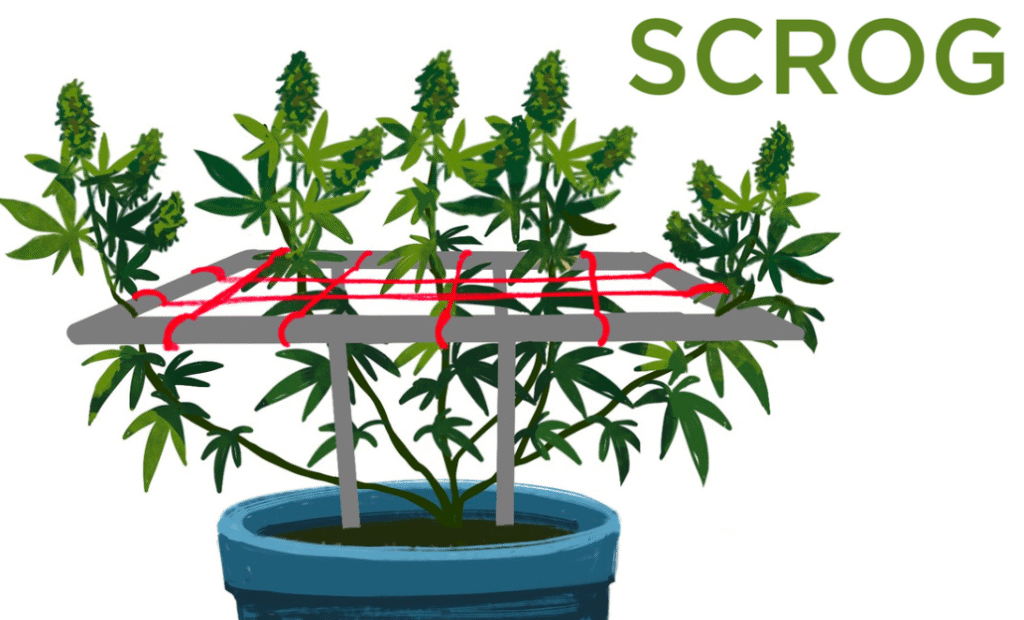
How to ScrOG
Selecting the right strains
- Tall Sativas: Sativa-dominant strains are naturally tall and leggy. Their branches can easily be interwoven to fill a ScrOG. Shorter and bushier Indicas can also be used, but you’ll need more plants to fill the space as much as possible. Several different strains can be grown in a single ScrOG screen for a varied harvest. However, choose strains that reach a similar height to minimize your workload.
Use appropiate Pots
To optimize your grow, you’ll need to choose appropriately sized pots. The pot size will vary depending on the number of plants you plan to grow in your ScrOG. Keep the following factors in mind:
- Multiple plants: If you want to grow multiple plants in a small space, you’ll need to consider the spacing between plants (which we’ll explain later). For this reason, each plant will need a small pot. A 11-liter pot maximizes the space while optimizing plant growth.
- Single plants: If you’re growing a single plant in your ScrOG, you can use a larger pot. A 25-liter pot will give the plant enough room to develop a good root system.
- Fabric Pots: While the ScrOG method greatly improves crop aeration, fabric pots greatly increase substrate aeration.
Mesh: height, size and materials
- Mesh size: This depends on the number of plants in the grow and their size. The crop should be completely uniform so a mesh that’s too large will cause fewer problems than one that’s too small. Ultimately, the ideal size will depend on the grow space.
- Meshing: Hemp rope is perfect for this; the cannabis branches practically adhere to the rope’s coarse texture.
- Frame: Make a square (or rectangular) frame using four pieces of woods slightly smaller than your grow space. Cut four legs (of the same size between them) and screw them to the top of the frame, this same design can also be made with PVC pipe. Screw eyebolts into the top of the frame, leaving a space of 6 cm between each, and tie the rope.

How to apply ScrOG: Procedure
- Topping: When plants have developed 5 nodes (the area where branches join the stem), top prune them at the highest node. Using clean, sharp scissors, cut the main stem just above this intersection. This pruning forces the plants to grow into multiple main stems, rather than just one, encouraging lateral growth that is more conducive to the ScrOG method.
- Setup: Place the mesh approximately 20–40 cm above the growing medium. Position the lights so that the entire mesh is evenly exposed to light.
- Weaving the Branches: Cannabis branches do not act as vines. They must be woven manually through the mesh. Try to fill each square with a single branch; do this gently but efficiently. If a branch doesn’t want to go in a certain direction, don’t bend it to avoid breaking it. You should direct the branches in different directions to prevent the mesh from becoming saturated or the branches from shading each other.
Continue waving the branches during the early stages of the flowering phase, until the mesh is full. Secure the branches in place using soft garden benders; I didn’t have any and made them out of wire: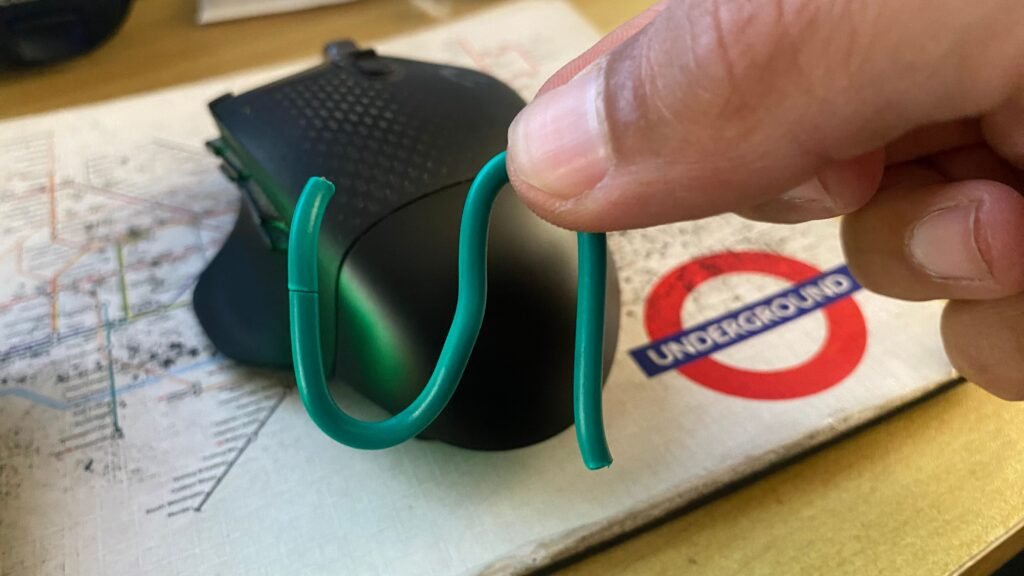
- Pruning: remove branches below the topping point to force the plant to focus all its energy on the tips. These branches require their own supply of water and nutrients; pruning makes these resources available.
- Maintenance: Cannabis plants are stressed during the ScrOG process. Each time you branch, water the plants immediately afterward. TDo this as long as top 3-4 cm of soil is completely dry.



